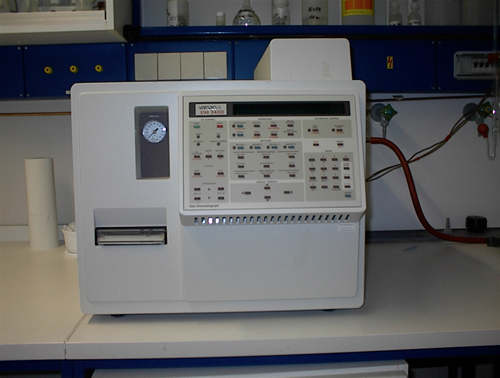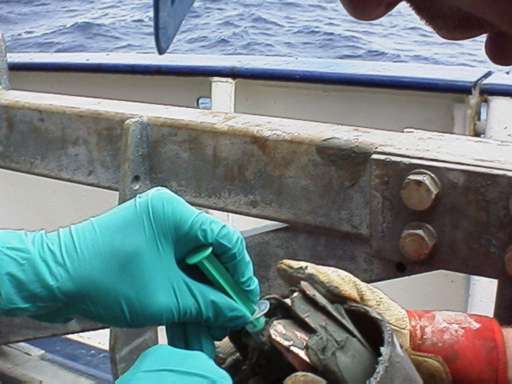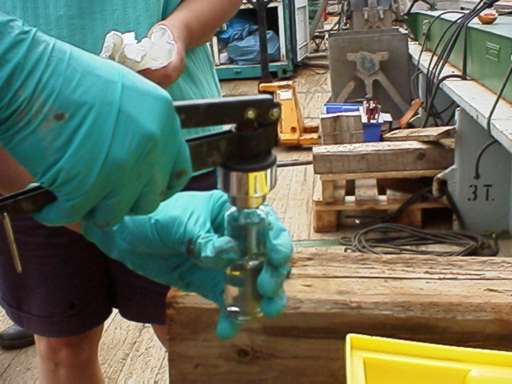| method | Methane in sediment is analyzed by headspace GC analysis with FID detection. |
|
instrument: Varian Star 3400 Column: J+W Scientific #115 3432 30m x 0.53mmID Phase:GSO Film:THK. |
 |
| bottled gas | Hydrogen 5.0, Nitrogen 4.6, synthetic air, methane (min. 99.9%) |
| work solution | prepare a 1.2 M NaCl solution, artificial seawater |
| methane standard stock | Headspace vial with pure methane |
| work standards | work standards are prepared by injecting different amounts (i.e. 5, 10, 20, 50 µl of pure methane into headspace of sealed 50 ml vials filled with 25 ml of artificial seawater |
| GC conditions | AIR = synth air, FID gas = Hydrogen, Carrier = nitrogen, Make up = nitrogen, Inj 50°, Detection 150° Column 30°C) |
| calibration | 10 to 50 µl are drawn from the headspace of standard vials by a headspace syringe and injected into GC |
| conversion | conversion
of GC readings in ppm to
pore water concentration in mole per Liter |
| sediment is sampled using a 10ml standard syringe with cut tip such that the whole diameter is open. The piston is carefully pulled back while pushing the syringe into the sediment. sediment samples for methane analysis are taken from the core catcher directly after recovery |  |
|
sample preparation: 50 ml
Headspace vials are filled with 20 ml of NaCl/HgCl2
work solution. 5 ml sediment are added and the vials are
sealed immediately samples are then homogenized by
shaking for 3 min. Analysis should be performed
within a few hours |
 |
| tips + tricks |
Sediment
has to be sampled as fast as possible. We obtained the
most reliable results by sampling directly from the core
catcher and from the open liner ends when the core is
cut into segments on deck. These first samples give a
good idea of the real methane concentrations and allow
location of the Sulfate methane transition zone (SMTZ)
which then may be sampled at higher resolution. In the cool
lab we used to cut little windows into the liner
and take syringe samples for methane analysis prior to
opening the whole core in the glovebox. Since we now
almost exclusively take
rhizon pore water
samples directly through the liner prior to opening the
core we avoid using glove boxes. It is virtually
unavoidable to lose some methane, so measured
concentrations will be smaller than real concentrations. |